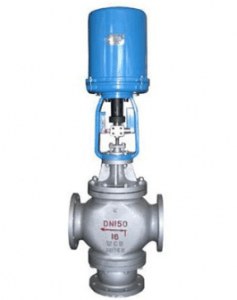3 Way valves control a wide range of process liquids, gases, and vapors in high pressure and critical service applications, a 3-way control valve shuts off water flow in one pipe while opening water flow in another pipe. In a modulating or 3-point floating application the valve can also mix water from two different pipes into one pipe or divert water from one pipe into two different pipes.
Connected to the Building Automation System and thermostats located in each zone, the 3-way valve directs the heating or cooling water through the coil if heating or cooling is required. If the zone does not need heating or cooling the flow is directed through the bypass line to the return piping.
Types and function
There are two major types of three-way valves:
● The T-port valve
● the L-port valve
Function
The 3-way ball valve T port can be used to connect the openings in a pipeline, allowing for different inlet and outlet flow patterns. Generally, the 3-way ball valve T-port valve is preferred in most cases as it allows for multidimensional flow patterns, unlike the L-port valve which seems to be non-dimensional.
Advantage
● There is a tight seal in the 3-way control valve to protect against the leakages
● The 3-way control valve always works efficiently and effectively in a high pressure and temperature environment.
● The spindle and plug are of stainless steel to increase the lifespan of the 3-way
control valve along with the seal
● Conducting all the quality checks and meeting the highest standards before the
shipment of the 3-way control valve
● Flanges are also present in the 3-way control valve that assist in integrating along with the other systems smoothly.
Description:-
● Body: WCB, LCB, SS304, SS316, SS316L
● Class: 150, 300
● Size: 1″, 2″, 3″, 4″, 5″, 6″
● Nominal Diameter: DN25 to DN300
● Nominal Pressure: PN16, PN25, PN40, PN64, Class150, Class300
Showing the single result



